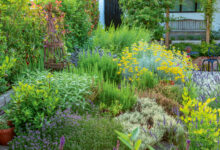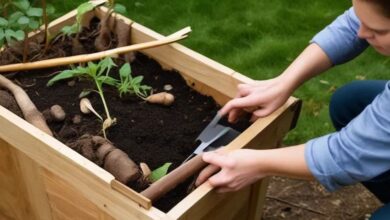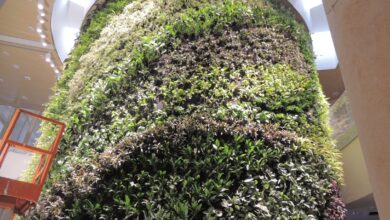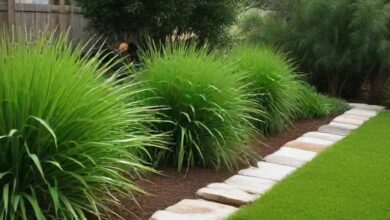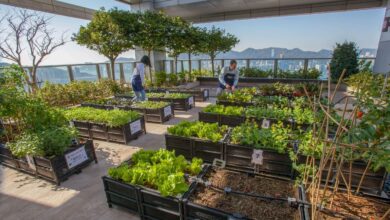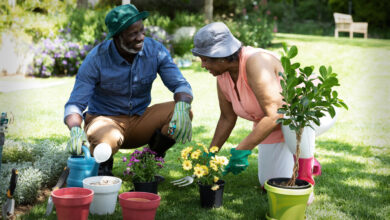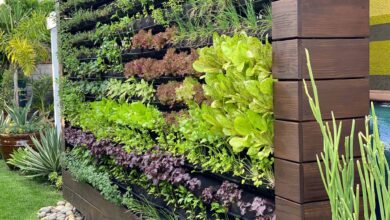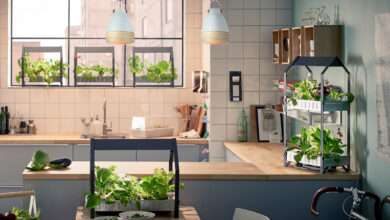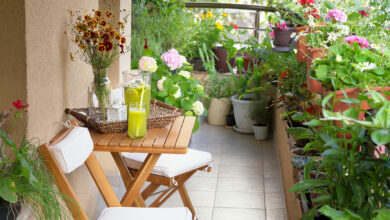How to Maximize Your Balcony Garden Space With These 10 Tricks
Transform your small outdoor space into a thriving oasis! Discover 10 proven tricks to maximize balcony garden space with vertical planters.
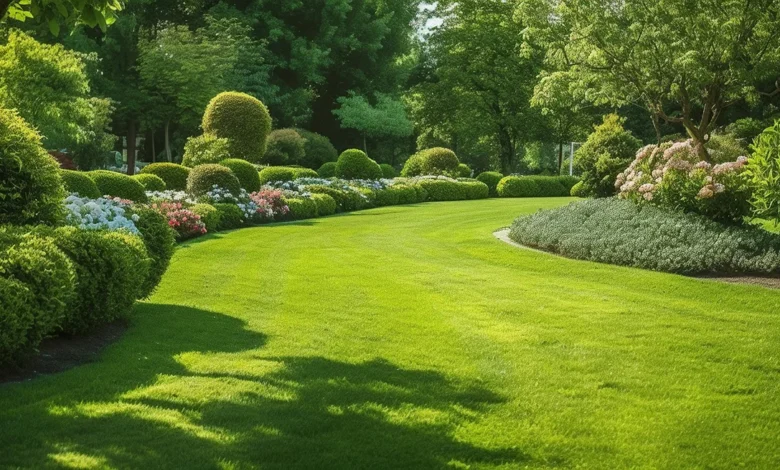
Living in an apartment doesn’t mean sacrificing your Garden Space. Balcony gardening has become increasingly popular among urban dwellers who crave fresh herbs, vegetables, and flowers despite limited square footage. The key to success isn’t having more space—it’s using what you have more intelligently.
Small space gardening challenges you to think vertically, strategically, and creatively. With the right techniques, even a tiny balcony can become a productive container garden yielding fresh produce and beautiful blooms. Recent trends show that over 35% of apartment dwellers have started their own balcony gardens, driven by desires for fresh ingredients, mental wellness, and attractive outdoor spaces.
This comprehensive guide reveals ten proven strategies to transform your balcony into a thriving garden paradise. Whether you’re interested in growing vegetables, creating an herb garden, or adding greenery for aesthetic appeal, these space-saving gardening tips help you overcome common challenges like limited floor space, wind exposure, and inadequate sunlight. From understanding your balcony’s microclimate to implementing vertical gardening systems, each trick builds upon the last to create a comprehensive approach to balcony garden design. Let’s explore these transformative strategies that will help you create your dream balcony garden, regardless of size limitations.
1. Assess Your Balcony’s Conditions
Before purchasing plants or containers, conduct a thorough assessment of your balcony garden space. This foundational step saves time, money, and frustration while ensuring plant selection that thrives in your environment.
Sunlight exposure is critical—spend several days observing your balcony at different times to measure sun hours accurately. Most vegetables need 6-8 hours of direct sunlight, while herbs manage with 4-6 hours, and shade-loving plants thrive with 2-4 hours. South-facing balconies receive the most sun, east-facing get gentle morning light, west-facing experience intense afternoon heat, and north-facing receive the least direct sunlight.
Understanding weight capacity ensures safety. Contact building management to determine maximum load limits. Moist potting soil weighs 75-100 pounds per cubic foot, so large planters can quickly add up. Opt for lightweight fiberglass, resin, or plastic containers instead of heavy terracotta or ceramic options.
Wind exposure and temperature fluctuations affect plant health significantly. Higher floors experience stronger winds that desiccate soil and damage foliage. Consider installing privacy screens or lattice panels to reduce wind speed by 50-70%. Concrete surfaces can create microclimates 10-15 degrees warmer than ambient temperature, so plan accordingly.
2. Embrace Vertical Gardening Solutions
- Vertical gardening represents the most transformative strategy for maximizing balcony garden space. By utilizing walls, railings, and overhead areas, you can multiply growing capacity by 300-500% without adding floor space.
- Wall-mounted planters transform bare surfaces into productive growing areas. Fabric pocket planters offer affordable options holding 6-12 plants while weighing just a few pounds. Living walls create a stunning visual impact with modular panels featuring multiple planting tiers. Choose compact plants with similar requirements—succulents, herbs, and small ornamentals work particularly well.
- Trellises support vining plants that grow upward rather than outward. A 6-foot trellis can support plants producing 20-30 pounds of vegetables or 10-15 square feet of foliage. Suitable climbing vegetables include pole beans, peas, cucumbers, cherry tomatoes, and small squash varieties. Train ornamental vines like clematis, jasmine, or passionflower for privacy and beauty.
- Hanging baskets utilize overhead space for trailing plants like petunias, strawberries, cherry tomatoes, and cascading herbs. Install heavy-duty hooks rated for 35+ pounds and choose self-watering designs to reduce maintenance.
- Tiered plant stands create multiple growing levels within compact footprints, effectively tripling or quadrupling planting area. Arrange tall, sun-loving plants on top tiers and shade-tolerant varieties below.
3. Choose Space-Efficient Containers

- Container selection dramatically impacts your balcony garden’s success. The right containers maximize growing space while staying within weight constraints.
- Rectangular planters utilize space more efficiently than circular pots. A 36×12-inch rectangular planter fits more plants than three 12-inch round pots in the same linear space. Window box-style planters attach to railings, creating growing space without consuming floor area.
- Self-watering containers revolutionize balcony container gardening by extending watering intervals from daily to weekly. Built-in reservoirs deliver consistent moisture through capillary action, preventing both drought stress and overwatering. They’re particularly beneficial for busy professionals or frequent travelers.
- Lightweight materials matter when working within weight restrictions. Resin, fiberglass, or quality plastic planters weigh 50-70% less than ceramic or terracotta while providing identical growing capacity. Fabric grow bags offer exceptional root development through air pruning while weighing mere ounces and costing significantly less than rigid containers.
- Rail planters hook over railings, creating growing space without floor area consumption. These specialized containers work perfectly for herbs, annual flowers, trailing plants, and compact vegetables like lettuce and radishes.
4. Select Appropriate Plants
- Plant selection makes or breaks your balcony garden experience. Choose varieties specifically suited to container growing and your unique conditions.
- Dwarf varieties offer full-sized flavor in compact forms. Dwarf tomatoes like ‘Tiny Tim’ reach just 12-18 inches while producing abundant cherry tomatoes. Compact peppers, bush cucumbers, and patio eggplants bring full-scale vegetables to the smallest balconies. Choose compact herb varieties that stay bushy rather than growing tall.
- Multi-purpose edible plants maximize small-space gardening. Rainbow chard provides colorful, ornamental stems while delivering nutritious greens. Purple basil offers stunning foliage alongside culinary usefulness. Edible flowers like nasturtiums, pansies, and violas combine beauty with functionality. Strawberries create ornamental displays while producing delicious fruit.
- Succession planting maximizes productivity—plant lettuce seeds every two weeks for continuous harvest rather than one-time bounty. Replace spring peas with summer beans, then fall greens—three harvests from one container annually.
- Low-maintenance plants forgive occasional neglect. Succulents require minimal water and thrive in sunny exposures. Hardy herbs like rosemary, thyme, and oregano tolerate occasional drying better than tender basil. Tough ornamentals like lantana, portulaca, and geraniums bloom prolifically despite challenging conditions.
5. Optimize Soil and Growing Medium
Quality growing medium directly impacts plant health and maintenance requirements in container gardens.
Never use garden soil—it compacts in pots, restricting roots and drainage. Use a specially formulated potting mix combining peat moss or coir, perlite, and compost. These create light, fluffy textures that drain well while retaining adequate moisture.
Add moisture-retaining amendments like water-absorbing polymers (hydrogels) to reduce watering frequency. Coconut coir holds more moisture than peat while remaining sustainable. These amendments prove especially valuable for containers exposed to intense sun or wind.
Container plants depend entirely on the provided nutrients. Mix organic fertilizers like compost or worm castings into potting soil at planting time. Apply liquid fertilizer every 2-4 weeks during the growing season. Organic options include fish emulsion, seaweed extract, or compost tea, providing balanced nutrition.
Apply mulch to container surfaces to conserve moisture and regulate temperature. Use shredded bark, coco coir, or straw—apply 1-2 inches around plants. For small containers, try fine-textured options or decorative pebbles.
6. Implement Smart Watering Systems
Effective watering systems transform balcony gardening from a daily chore into a manageable routine.
Drip irrigation delivers water directly to plant roots with minimal waste. Modern systems connect to outdoor faucets or indoor sinks, extending tubing to individual containers. Battery-operated timers automate schedules, ensuring consistent moisture even when traveling. Basic kits cost $30-80 and install without permanent modifications.
Beyond individual planters, create DIY self-watering systems using water reservoir inserts or wick systems with cotton rope drawing moisture from buried reservoirs. These convert standard containers into self-watering planters at minimal cost.
Develop watering schedules based on specific conditions. Water early morning or evening to minimize evaporation—mid-day watering wastes 30-40% to evaporation. Group plants with similar requirements together. Use moisture meters for objective measurements.
Conserve water by collecting air conditioning condensate—units produce several gallons weekly. Apply organic mulch, reducing consumption by 25-40%. Group containers close together, creating microclimates where plants shelter each other from drying winds.
7. Maximize with Companion Planting
Companion planting strategically combines plants with complementary characteristics, maximizing productivity in small balcony gardens.
Create three-dimensional gardens by combining plants with different growth habits. Plant tall cherry tomatoes with low-growing lettuce at the base—vertical growers shade lower plants while understory plants utilize space. This layering doubles or triples per-container productivity.
Combine deep-rooted tomatoes with shallow-rooted lettuce, exploiting different soil zones without competition. Mix early-maturing radishes with late-season tomatoes—harvest spring crops before summer plants need full space.
Certain plant partnerships offer mutual benefits. Basil with tomatoes may improve flavor while deterring pests. Marigolds repel various pests while adding color. Nasturtiums attract aphids away from vegetables as sacrificial “trap crops.”
Herbs companion plant beautifully with vegetables. Plant chives near tomatoes or lettuce—strong scents confuse pests. Dill attracts beneficial insects like ladybugs that prey on garden pests. Create themed combinations: Mediterranean gardens pairing tomatoes, basil, and oregano, or Asian-inspired containers with bok choy, cilantro, and Asian basil.
8. Create Beautiful Design

Balcony garden design should balance aesthetics, functionality, and comfort, creating outdoor spaces that are both productive and enjoyable.
Develop a color scheme creating visual harmony. Limit your palette to 2-3 main colors plus green foliage for cohesive, sophisticated designs. Consider foliage colors and textures—silver-leaved plants provide a cooling contrast to bright blooms. Mix textures including fine-leaved herbs, bold foliage, and grass-like ornamentals.
Establish focal points drawing the eye—striking specimen plants, decorative trellises, or artistic containers. Place focal points at eye level where they’re immediately noticeable. Use repetition to create unity by repeating colors, plants, or container styles. Group containers in odd numbers (3, 5, 7) for natural, dynamic arrangements.
Extend usability with lighting design. String lights create a magical ambiance while solar-powered stake lights highlight favorite plants. LED strip lights under railings add contemporary flair. Combine task lighting for activities with ambient lighting for mood.
Select balcony furniture that complements your garden. Folding chairs maximize flexibility while conserving space. Choose weather-resistant materials like powder-coated metal or all-weather wicker. Balance planted areas with open space—maintain 40-50% floor clear for movement and breathing room.
9. Implement Pest Management
Pest control in balcony gardens typically proves easier than ground-level gardening, yet problems still occur. Prevention represents the most effective strategy. Healthy, properly maintained plants resist pests better than stressed ones. Inspect new plants carefully before introducing them. Maintain hygiene by removing dead leaves and debris where pests harbor. Avoid overhead watering, which promotes fungal diseases.
Use organic pest control when problems occur. Manually pick off caterpillars and beetles. Spray aphids off with strong water jets. Apply insecticidal soap for soft-bodied insects like aphids and whiteflies—it works on contact without chemical residues.
Encourage beneficial insects acting as natural pest control. Plant flowers attracting ladybugs, lacewings, and hoverflies that consume garden pests. Herbs like dill, fennel, and yarrow draw these helpful predators. Create diverse plantings supporting beneficial insect populations.
Use physical barriers like row covers to protect vulnerable plants from flying insects. Copper tape deters slugs and snails. Yellow sticky traps monitor and catch whiteflies and fungus gnats.
10. Maintain Year-Round Productivity
Strategic seasonal planning extends your balcony garden’s productivity throughout the year. Understand growing seasons for different crops. Cool-season vegetables like lettuce, spinach, peas, and kale thrive in spring and fall when temperatures stay below 75°F. Warm-season crops, including tomatoes, peppers, and cucumbers, require summer heat. Plant accordingly to maintain continuous harvests.
Implement season extension techniques for year-round growing. Cold frames or mini-greenhouses protect plants from early and late frosts. Row covers add several degrees of frost protection while allowing light penetration. Move containers to protected areas during extreme weather.
Winter gardening remains possible in many climates. Hardy greens like kale, spinach, and arugula tolerate light frosts. Herbs like rosemary, thyme, and sage survive mild winters. In cold climates, bring tender herbs indoors or grow cold-hardy varieties exclusively.
Practice container rotation—move plants seeking optimal conditions as seasons change. Shift heat-loving plants to sunny spots during summer, relocate shade-preferring plants to cooler areas. Bring frost-sensitive containers near walls or under overhangs for protection.
Develop an annual garden calendar, planning what to plant when. Schedule spring seed starting indoors, summer transplanting, fall succession plantings, and winter preparation. This organization ensures seamless transitions between seasons, maintaining productive gardens year-round while maximizing your balcony garden space.
More Read: Vertical Gardening Grow More in Less Space
Conclusion
Transforming your balcony into a thriving garden requires strategic planning, creative space utilization, and consistent maintenance, but the rewards far exceed the effort. By implementing these ten tricks—assessing your conditions, embracing vertical solutions, selecting appropriate containers and plants, optimizing soil, installing smart watering systems, practicing companion planting, creating beautiful designs, managing pests organically, and maintaining year-round productivity—you can maximize your balcony garden space regardless of size limitations.
Whether you’re growing fresh vegetables, cultivating herbs, or creating an ornamental retreat, these techniques help you overcome common small-space gardening challenges while creating a productive, beautiful outdoor sanctuary. Start with one or two strategies, gradually incorporating others as your confidence grows, and soon your balcony will become the verdant oasis you’ve always envisioned—proving that limited space never limits gardening possibilities.
